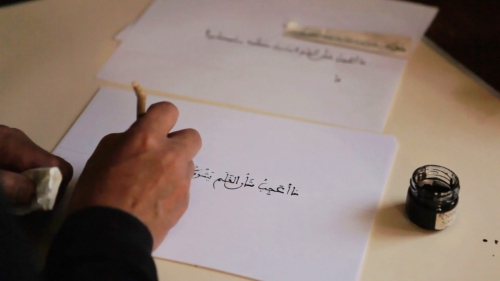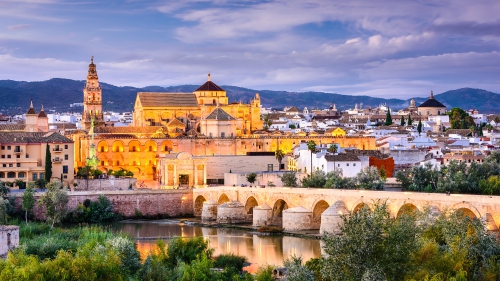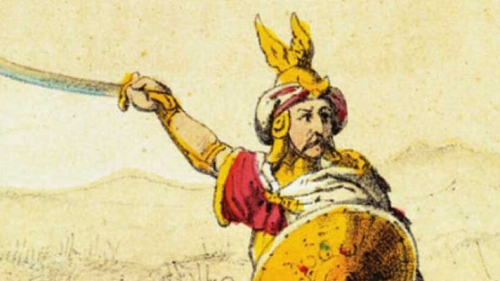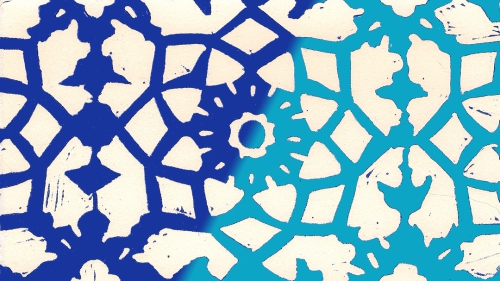Mass versus Minarets: The Cordoba Controversy
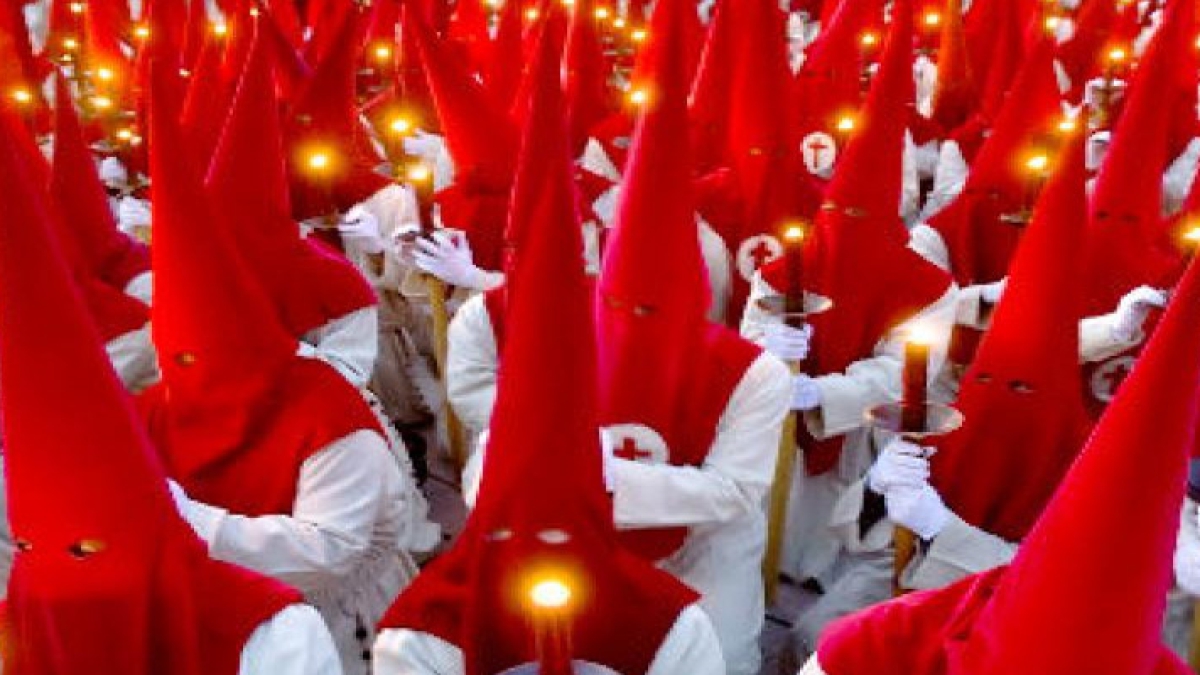
Should Spain's most famous mosque actually be called a cathedral? Dale Fuchs reports on the question dividing a city
For Fatima Moya, a 23-year-old hotel receptionist in Cordoba, it couldn't be more obvious: the 1,200-year-old building outside her window is a mosque.
Granted, a mahogany choir sits smack in the middle of it, along with all the other gilded trappings of a small cathedral, and the minaret is dressed up like a Baroque belfry.
But Ms Moya takes her breaks in the Moorish inner-courtyard, filled with orange trees and a gurgling fountain. Every day she sends hordes of tourists to admire the Arabic inscriptions and intricate mosaic tiles in what was once the prayer niche, or mihrab. The place where Ms Moya works is even called "Hotel Mezquita" - the Mosque Hotel.
So she has no qualms about calling this sumptuous place the Great Mosque of Cordoba, even though it has been consecrated as a church since a Catholic king took the city from the ruling caliphs in 1236.
"Everyone in Cordoba calls it the mosque," said Ms Moya. "If I said it was a cathedral, nobody would know where it is."
But the Bishop of Cordoba, Demetrio Fernandez, thinks this oasis of striped horseshoe arches, one of the oldest buildings in the Islamic world, is having an identity crisis and could do with a new christening. Earlier this week, he called on the city to refer to the Moorish-era masterpiece solely as the "Cathedral of Cordoba" on street signs and tourist brochures. The Muslim past and Catholic present receive equal billing on Cordoba's white-washed tourist circuit of winding cobbled lanes. "It confuses the visitor," the bishop wrote in an opinion piece in a local Cordoba daily.
In his view, the church deserves top billing on this Unesco World Heritage Site because it has paid for its preservation and held masses there for eight centuries. The mosque, he argued, was built in the 8th century on the site of a Visigoth church (with the ruins of Roman temple buried below). And here's the clincher: the defeated Moors would have destroyed all the intricate plasterwork rather than surrender it - if the negotiating skills of Cordoba's Catholic conqueror, Ferdinand III, hadn't saved the day.
Indeed, its conversion probably saved it from destruction by Inquisition-era builders, who had little interest in aesthetics and no qualms about plonking down churches on the ruins of elegant geometric motifs.
"History is fluid," the bishop concluded with a tit-for-tat reference to the Mosque of Damascus: "What was once a Catholic temple is a Muslim mosque today, and vice versa in Cordoba; what was once a Muslim temple is now a Catholic cathedral."
The attempt to rebrand a piece of Cordoba's Muslim heritage might seem odd. The city, a candidate for European Cultural Capital in 2016, usually sells itself to tourists by proclaiming its Muslim heritage from the 8th to the 13th century, when it was a cosmopolitan melting pot, a medieval Manhattan.
It was the biggest and wealthiest city in Europe with a population of about half-a-million Jews, Christians and Muslims living in relative harmony. Any self-respecting poet, scientist or philosopher had to pass through. The mosque, the second-largest in the world at the time, was the city's spiritual core. Most locals, moreover, are proud of this chapter in Spanish history. "There's a little bit of all three cultures in all of us," boasted Ms Moya. Not surprisingly, the city's mayor, from the United Left Party, has refused to change brochures and signs.
The bishop's sudden concern for nomenclature stems from a years-long feud between the Catholic Church hierarchy in Spain and Spanish converts to Islam, who believe Muslims should be allowed to kneel in prayer in the great hall once again.
"I don't care if they call it the old mosque, but what I don't want is for it to be called just a mosque," he told reporters recently. "The craze for suppressing the word cathedral and insisting that it is a mosque is related to the insistence that it should be open for prayer of all faiths."
In 2006, the Islamic Council, which represents the 300,000 Spanish converts out of Spain's growing Muslim community of two million, petitioned the Vatican "to send a message of hope to the world" by permitting ecumenical prayer at the former mosque. The Islamic Council insists that they do not wish to return Cordoba to the era of "al-Andalus," the name for Spain during the Moors' 700-year rule. "While others talk about the clash of civilizations, this would be an example of tolerance," said Isabel Romero, spokeswoman for the Cordoba-based Islamic Council.
The Vatican has since allowed Spain's hierarchy to decide the question, which means that security guards still stop any visitor who attempts to prostrate themselves amid the statues of the saints.
The guards worked overtime this April when members of a group of 120 Muslim tourists from Austria tried to pray. Some scuffled with the guards. Police were called and two tourists were arrested. The church officials believed it was an orchestrated challenge.
But purging street signs of the word "mosque" will not solve anything, as far as Ms Romero is concerned. "To try to erase history is a great error," she said.
She believes the bishop's concern for the name is motivated by Islamophobia, on the rise in Spain since the 11 September attacks in New York and the March 2004 rail bombing in Madrid by Moroccan extremists. Fear of Islam is a familiar theme here. Converted Catholics of Muslim origin, known as Moriscos, were expelled from Spain 400 years ago, and following that fateful decree, many converts took great pains to prove they were pure-blooded Christians, flagrantly thwarting Muslim taboos, according to Antonio Manuel Rodriguez, author of the book Footprints of the Moriscos and a professor of Islamic Civilization at the Spanish University of Distance Learning.
The familiar tapas, for instance, was originally a slab of prohibited pork fat over an equally off-limits glass of wine, signaling the drinker was not a devout Muslim. An effusive demonstration of worship during Holy Week was a sure way for the nervous convert to prove he had no hang-ups about graven images, Mr Rodriguez points out. Some covert Muslims even raised pigs to distract attention from the fact they didn't eat ham, an offence punishable by death at an Inquisition trial.
"They were sending out the message, 'See, look, I'm not a Muslim'," he said. Jewish converts used similar tactics that persist as popular customs, such as staging an energetic, open-window cleaning session on Saturday, the Jewish Sabbath, he said. The surviving Islamic influence in Spain amounts to more than a bunch of florid inscriptions in praise of Allah plastered across Granada's Alhambra or Cordoba's former Great Mosque.
More than 300,000 Spanish words today are derived from Islamic terms, including the most stereotypical, such as the bullring shout of Ole! a variation of Allah, and flamenco, which, according to Mr. Rodriguez, grew out of the phrase fellah mengu meaning "displaced peasant", or gypsy. The 700 years of Moorish rule also permeates everything from irrigation to Spain's traditional architecture, with rooms set around an internal courtyard.
Or consider Mr. Rodriguez's grandfather, one of many Andalusian farmers who observed a strangely rigid washing-up ritual after a day's work. "He would first roll up his sleeves, and wash up to the elbows, then his face, then his eyes, mouth and ears and sniff the water into the nostrils," Mr. Rodriguez recalls. "He was echoing the Muslim ablution rituals, but he didn't know it.
"Catholic Spain destroyed the proof - they turned minarets into bell towers - but they couldn't erase the Muslim traces."
Source: The Independent
Related Suggestions
Kam seems to be lead by lies of historians. Kindly read books and speeches of (Late) B.N.Pande which will open your heart towards beautiful facts of Indian History. May God Bless !
Wouldn't it be better if they used their time to DO something constructive for other Kams and Roms in society?
They also don't seem to like Muslims, yet Spend all their time ONLY at this Muslim webstie. Very strange indeed.
Oh well! Why ask Why? Try Bud Dry!!!
May be they will improve marketing if they called it Cathedral Mosque or Mosque Cathedral (sorry, no matter what one calls it, no muslim prayers there; muslims don't control it now).
Why muslims insist on praying there? Would they allow Catholic mass in Damascus Mosque (previously a church) or Hindus worshipping their idols at Mosques in Varanasi and Mathura (previously Hindu temples)?. Sorry, reciprocity is a 2 way street, not a one way one.
It is commonsense logic.
Once a Mosque is always a Mosque? Cardoba and Ayodhya break that rule. You cannot impose it in Cardoba or Ayodhya, like it or not.
But think again, does Islam has no trail of blood in its history? They were no different. Prophet Muhammad -examplar in the eyes of Muslims - ordered destruction of images and places of worship Christians and Jews in Mecca when victorious Muslim armies entered Mecca. That set the example, a precedent- to be followed by later Muslims.
Muslims were no less harsh in the destruction of temples , synagogues and churches in the last milleniums.It happened in Europe and Asia. However I must say there were always great souls-kings and ordinary men who protected places of worship too. That was an exception and not a rule.
This tells me such an intolerant barbaric behaviour is so common in followers of all Abrahamic faiths. What a tragedy. Wa Salaam.






